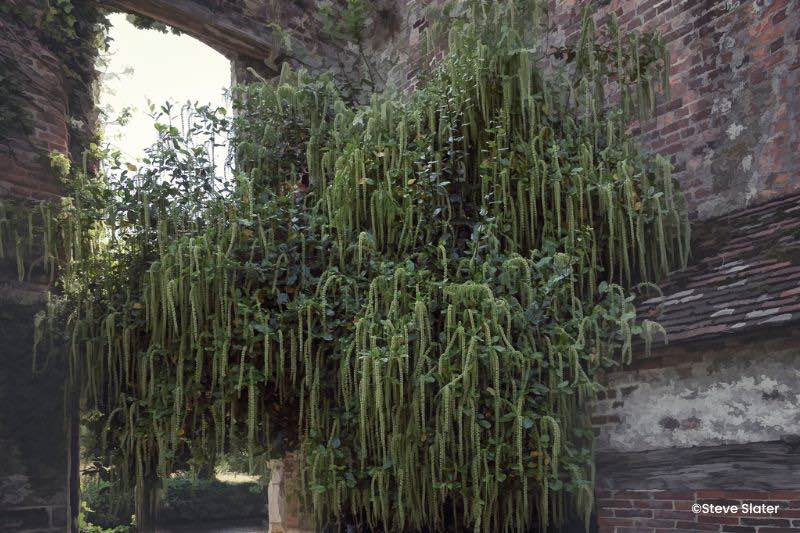Iteas (sweet spires) are summer-flowering shrubs in long scented, melliferous spikes. Itea virginica (Itea virginica), most popular, has deciduous foliage that turns striking colours in autumn. It is very hardy and ideal for dressing wet areas. Less cold-hardy but less water-demanding, holly-leaved Itea (Itea ilicifolia) is notable for its evergreen foliage and long ornamental aments at the end of summer.
Itea is easy to grow and requires little care, but a few actions will help keep a well-balanced, healthy bush. Pruning, although not obligatory for these slow-growing plants, has several benefits. It allows in particular :
- to maintain a harmonious silhouette ;
- to encourage branching, for a denser bush ;
- to open up the centre of the bush to let more natural light through ;
- to prevent excessive proliferation in vigorous species.
Here are our tips and tutorial to successfully prune your Itea, either be it in the ground or in a pot.

Which Itea varieties are suitable for pruning?
All Itea varieties can be pruned :
- Itea ilicifolia or holly-leaved Itea;
- Itea virginica, most widespread ;
- its various cultivars, such as ‘Henry's Garnet’, or the more compact ‘Little Henry’, ‘Love Child’ and ‘Scentlandia’.

When to prune Itea?
Pruning of Itea is carried out after flowering. For Itea virginica and its varieties, it is done therefore at the end of summer, around August. For Itea ilicifolia, prune at the start of autumn, in October. A later pruning could affect formation of flower buds for the following year.
This pruning is generally performed every 2 to 3 years, depending on growth and growing conditions of your bush.
You can also carry out a prune in late winter (between February and April depending on region) before regrowth. In that case, remove only aerial parts that suffered damage during the cold season : frozen branches and twigs, or those damaged by other climatic conditions (wind, heavy rain…).
Suckers can be pruned or removed in autumn.
Steps to prune your Itea
Pruning aerial parts
Parts to prune are :
- overlong stems that unbalance the bush's silhouette ;
- damaged stems, broken, dried ;
- poorly positioned stems ;
- old wood (old branches).
To succeed in pruning Itea:
- using a well-sharpened, previously cleaned pruning shear, cut twigs just above an eye (outgrowth forming a bud in the axil of a leaf or at the tip of a stem), or just above a branching ;
- cut back about one-third of the length, never exceeding half.
Pruning suckers
Overly rich growing conditions (particularly humus-bearing soil or regular fertiliser inputs) can generate formation of suckers in Iteas grown in the ground. This is especially the case with Itea virginica. These are shoots connected to the parent plant's base, which develop and spread around the planting area. They allow the plant to multiply by creating new identical bushes.
To prevent these suckers from spreading too much, or if you wish to contain your bush within a specific area, you can remove them.
Wait until they reach between 10 and 20 cm in length, then :
- using a spade, dig around the sucker (be careful not to risk damaging the main root system) ;
- cut the root that connects the sucker to the parent plant to detach it (use the spade or a pruning shear).
It is possible to replant these suckers if you wish to propagate your Itea, either in the ground elsewhere in the garden or in a pot. Water regularly until the bush develops and becomes more vigorous.
A simple cutting of suckers at ground level can sometimes suffice and is quicker than removing them.
For more advice : « My bush is suckering. Why? What should I do? »
Equipment needed
For pruning Itea, simply prepare the following :
- clean, well-sharpened pruning shears to prun the aerial parts ;
- a well-sharpened spade for pruning suckers.































![[pruning plant="Itea"] Pruning of Itea](https://en.promessedefleurs.eu/blogwp/wp-content/uploads/2023/02/Comment-tailler-lItea-.png)
Comments